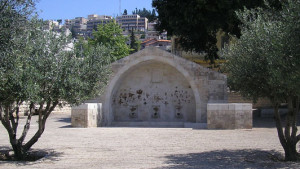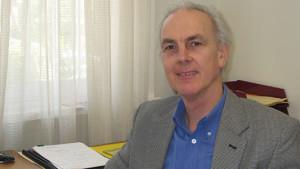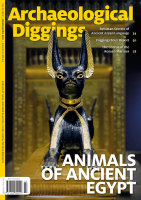The Shroud of Turin is perhaps one of the most studied artefacts in history. It bears an image of a crucified man with stark similarity to the accounts and representations of Jesus of Nazareth. For centuries, it was venerated by the Catholic Church and viewed by many to be the actual burial cloth that covered Jesus after His death, and found lying in the garden tomb (Luke 24:12; John 20:5). It was not until 1988, when a team of scientists were able to radiocarbon-date the Shroud, that it was determined to be a product of the mediaeval period, dating between AD. 1260–1390 (1000 years after the death of Christ), hence bringing into question its authenticity. Since the initial scientific dating, however, many challenges have arisen against the radiocarbon procedure, both for sampling accuracy and dating calibration. One of those challenges proposes that organic contamination of linen fibres can produce an altered date, although while organic contamination has been observed on Egyptian mummified ibis, it has yet to be observed on the Shroud of Turin.
An alternate proposition was biofractionation and isotopic exchange as a result of the 1532 fire in Sainte Chapelle, Chambry, where the Shroud was housed, which damaged the cathedral’s interior. This theory is largely based on unobserved theoretical calculations and unrepeatable models.
Yet, arguments continue to exist that the AD. 1260–1390 radiocarbon dates do not correspond with the date of the Shroud because of the questionable quality of the sample. This article will contextualise the inadequate sample theory within the broader body of evidence stemming from archaeology and historical accounts.
Historical-archaeological background
There are a number of archaeological artefacts and historical documents that indicate an earlier date for the Shroud of Turin than what the majority of documents and radiocarbon records reveal.
The Hungarian Pray Manuscript (AD. 1192–1195) is a collection of medieval manuscripts that contain an illustration depicting the crucified Jesus with significant similarities to the image on the Shroud. In the Manuscript, Jesus is depicted naked with arms crossed over the pelvis in the same fashion as the image on the Shroud, the herringbone patterning of the illustration is the same as the Shroud and there are four small circles on the lower part of the illustration forming an L-shaped letter, that likewise appear on the cloth.
Another point of interest is the Sudarium of Oviedo (Latin for a sweat cloth), which is claimed to have wrapped the head of Jesus after He was crucified. It was housed in an ark built by King Alfonso II of Asturias in AD. 840. Many aspects of the Sudarium and the Shroud are in accordance with each other, including the geometry of the markings and pollen samples (Moreno et al. 1998). The only major discrepancy between the Sudarium and the Shroud is the radiocarbon dates, as the Sudarium of Oviedo is dated to approximately AD. 700 (Moreno et al. 1998), whereas the Shroud is dated to the mid-thirteenth century.
There are also some historical records which indicate a possible first century origin for the Shroud. The Mandylion, or “image of Edessa,” is an artistic illustration of a cloth that depicts a portrait of the crucified Christ of “divine origin” (Lorusso et al. 2011). This may be an early reference to the the Shroud. It is dated to AD. 593 from the writing of Evagrius Scholasticus, and was later moved to Constantinople in 1204 during the Fourth Crusade, where it was recorded that a cloth bearing the figure of Christ was exhibited every Friday (Lorusso et al. 2011; Fanti 2012).
The argument for a first century date based on the evidence from archaeological artefacts and historical documents is not conclusive. However, this date is supported by the fact that there are multiple pieces of evidence, made up of different mediums—one painting and the other two fabric—and they all seem to corroborate the existence of the Shroud in the late first century. The inclusion of minute, though intricate details, such as the L-shaped holes in the painting and the matching geometric stains on the head cloth, seems an improbable duplication by chance. Despite this, linking any of the previously mentioned artefacts to the Shroud is still based on inference of similarity, regardless of how improbable the similarities are.
The clearest historical documentation of the Shroud originates from the year 1357, when it was displayed in a church in Lirey, France. From this point, it is believed that the Shroud was placed in the hands of Duke Louis
of Savoy, who stored it in a silver chest in a chapel at his capital, Chambery. In the year 1532, a fire raged through the chapel slightly damaging the Shroud, which was protected inside its silver chest located within a wooden closet. Part of the chest melted and gouts of molten silver burned the outsides of the Shroud. The Shroud was doused with water before further damage could occur and the burn holes were later patched. The Shroud also underwent numerous repairs by nuns from the Order of Saint Clare who applied patches and fixed the Shroud on a backing made of cloth.
It must be noted that there is no documentation of the origin of the Shroud and its earliest reference during the Middle Ages places it in a context of veneration, that is, it was at this point already viewed as a sacred artefact by the Church and the state. From this perspective, linking the Shroud (AD. 1357) to the Hungarian Pray Manuscript (AD. 1195) or the image of Edessa (AD. 1204) is not conclusive, but carries lines of contextual evidence as stated earlier. This is where the strength of scientific dating in archaeological and historical investigation can be applied to further the understanding of the date of the Shroud, which could consequently unlock its origin.
Analysis and radio-carbon dating
The first photographic documentation of the Shroud was performed in 1898 when the lawyer Secondo Pia photographed the image and discovered that it was clearer in negative form (Lorusso et al. 2011). This intrigued many scientific minds including biologist Paul Vignon, who assisted on a second photographic experiment in 1931. It wasn’t until 1978 that the Shroud of Turin Research Project (STURP) was initiated, comprising an international team of scientists. At this time, Professor Gilbert Raes of the Ghent Institute of Textile Technology cut the 1973 sample, storing it for later analysis. Further extensive analysis was performed on the Shroud, with methods such as (UV-F) photographs, digital image processing, chemical makeup and infrared analysis, were all performed within a 120-hour period of examination.
What makes the scientific analysis more unusual is that it has revealed the image to be in three-dimensional orientation, with both front and reverse details; the method of creating the image is still unknown. The level of difficulty of recording the image is described as like painting an acid on each individual coloured thread fibre around its circumference, but avoiding the adjacent fibres, using a hypothetical paintbrush whose bristle is about 10 µl in size (Accetta et al. 1980; Fanti 2012).
Furthermore, because the image disappears from our visionary limitations as you move within one to two metres of the cloth (Schwalbe et al. 1982), all these markings would have to be performed from this distance if it were created by an artist (Fanti 2012). Thus it appears that the creation of the Shroud is as unrepeatable as the event it is thought to describe.
As a result, the STURP project came to the conclusion that the most likely explanation for the image was a burst of short-lived and intense energy emanating from the body whilst it was wrapped in the Shroud (Fanti 2012). However, the significance of dating the Shroud with radiocarbon methods whilst not knowing how the cloth was created has raised some doubts as to whether this violates one of the fundamental assumptions of the radiocarbon method, namely the object under analysis must be known (Fanti 2012).
It was not till 1986 that STURP and the Vatican agreed to a final protocol, appropriately titled the “Turin Protocol,” to enable radiocarbon dating of the cloth. Three independent laboratories were chosen—Oxford, Tucson and the Swiss Federal Institute of Technology in Zurich. These final protocols brought heavy criticism from Harry Grove, the director of the Rochester Laboratory, because it was eliminating the more effective “double blind” method (Lorusso et al. 2011).
On April 21, 1988, Franco Testore took a single sample measuring 8.1 cm x 2.1 cm, which was divided into two, with one kept for further analysis and the other further divided into three, each weighing 40 mg, to be sent to the three laboratories. It is important to note that the original sample had 5 mm removed because of the presence of several coloured threads of unknown origin (Lorusso et al. 2011), which could imply possible contamination. The results of the radiocarbon dating were announced on the October 13, 1988, by Cardinal Ballestra and published in the February 16, 1989 issue of Nature. The overall calibrated mean radiocarbon age is 1260–1390 (Damon et al. 1989). The radiocarbon results are in accord with the historical documentation of the Shroud located in France in AD. 1357, but its earliest radiocarbon date of AD. 1260 with a 95 per cent confidence level places both the Hungarian Pray Manuscript (AD. 1192–1195) the image of Edessa (AD. 593–1204), and the Sudarium of Oviedo (AD. 700) outside the scope of the date range. It is important to note, yet obvious, that all three artefacts are recorded to be in existence before the fire of Chambery in 1532, because this fire event has become one of the main objections to the original radiocarbon date.
Quality of the radio-carbon sample
The presence and subsequent removal of several cotton threads from the original radiocarbon sample has caused a number of scientists to express concern over how accurately the sample represents the Shroud on a whole. Among these scientists is Raymond Rogers, one of the original scholars, who had been part of the team assembled to do the sampling. Rogers caught onto a hypothesis presented by Joseph G Marino and Sue Bradford, stating that the sample used for the radiocarbon analysis was part of a rewoven section of the cloth (Rogers 2004; Lorusso et al. 2011).
In response to these claims, Giovanni Riggi, who removed the sample from the Shroud, said that “[the sample] was cut from just above the place where a sample was previously removed. . . . The strip came from a single site on the main body of the Shroud away from any patches or charred areas” (Rogers 2004, 189). Further clarification of the authenticity of the sample were made by Gabriel Vial and Franco Testore, who stated, “We carefully inspected the Shroud and we are sure that this sampling place was representing the whole Shroud. . . . I examined carefully the cloth all along the warp and filling of the threads concerned without noticing any splicing” (Gove 1990).
Whilst the statements made by Vial, Testore and Riggi must be taken with merit, the argument made by Marino, Bradford and Rogers is that the rewoven fabric was so designed that it would have remained invisible to the naked eye (Rogers 2004; Lorusso et al. 2011). The basis of their argument was that in 1531, a document was written detailing the removal of part of the Shroud and replacing it with coloured cotton fabric woven together with the original linen (Lorusso et al. 2011). Furthermore, what makes the original sampling questionable is that it was executed privately with no chemical investigation prior to its removal (Rogers 2004). To test the hypothesis that the sample was not representative of the Shroud, Rogers made detailed analysis and comparisons of sections of the 1973 and 1988 samples, both of which he was in possession of.
His analysis revealed many discrepancies between the radiocarbon samples and the rest of the Shroud. The radiocarbon sample contained a gum/dye/mordant coating that was not present on the other areas of the Shroud (Rogers 2004). It also had a specific dye, alizarin and red lakes, that Rogers (2004) claims were not in use in Europe before approximately AD. 1291, along with indications of colour manipulation. As a result of his studies, Rogers (2004), stated that “the combined evidence from chemical kinetics, analytical chemistry, cotton content, and pyrolysis/ ms proves that the material from the radiocarbon area of the Shroud is significantly different from that of the main cloth and was thus not part of the original cloth.”
Further clarification of this hypothesis has been performed through an unauthorised and unpublished carbon-14 test by Alan Adler, John Heller and George R Rossman from the California Institute of Technology, or CalTech (Benford et al. 2002). The 1973 RAES thread was cut in half, separating what was described as “starch contaminate” and tested (Benford et al. 2002). Each sample was dated in a fourier-transform ion cyclotron resonance mass spectrometry by Rossman (Benford et al. 2002). Rossman’s results revealed that the starched sample dated to AD. 1200 whilst the non-contaminated sample dated to AD. 200 (Benford et al. 2002).
Until the results of the Benford et al (2002) radiocarbon study are published, they should be met with scepticism, regardless of the credibility of CalTech and the work of Rossman. What cannot be ignored is the comparative sample analysis by Rogers (2004). Without further examination, it isn’t possible to state with surety that the two samples are of different origin, though what Rogers (2004) demonstrates at the very least, are serious differences in the chemical structure between the radiocarbon sample and the remaining Shroud.
Discussion
The practice of archaeological science utilises multiple lines of evidence to answer complex questions of the past. Regarding the question of the date of the Shroud of Turin, archaeological evidence in the form of artefacts, historical written documents and scientific analysis such as radiocarbon and isotope analysis have all been utilised to try and piece together an answer.
Using strictly the historical and archaeological evidence, a reasonable case could be made for a late first century origin for the Shroud, but with the inclusion of the original radiocarbon dating ages, this seemed no longer the case. However, with further investigation of the questionable nature of the sample used for the radiocarbon dating, it appears that once again, the pendulum has swung back to the zone of uncertainty.
When the body of evidence is brought together, it creates a number of indisputable facts: (1) Based on the initial radiocarbon dates, chemical analysis of the Shroud and historical documentation, the Shroud was in existence during the Middle Ages and underwent fire damage but was later repaired through the sewing of new cotton mixed with the original fibres. What is of less certainty is that: (2) as a result of the repairs, if the sample taken for the initial radiocarbon analysis was part of the original Shroud; and that organic contamination of bacteria and fungi could affect the radiocarbon results. The lowest category of certainty is left for arguments that are contingent upon the results of the more reliable facts.
The argument that the Shroud of Turin is the very Shroud mentioned in the Hungarian Pray Manuscript is only possible if the initial radiocarbon dates are not representative of the main body of the Shroud. Thus, the Hungarian Pray Manuscript, Image of Edessa and Sudarium of Oviedo arguments are all classified amongst the lowest category of certainty.
Conclusion
Unfortunately, further analysis needs to be done to bring any more clarity upon the question of the origin of the Shroud, which entails receiving the permission of the Vatican. Due to the difficulties faced getting the first and second samples of the Shroud, it seems unlikely that a third investigation will be permitted anytime soon. So what can be concluded from the available evidence is that the 1989 radiocarbon age range of AD. 1260–1390 is no longer the terminus post quem for the origin of the Shroud of Turin. It is our most secure reference point, but due to the questionable nature of the sample, its radiocarbon date does not exclusively prohibit an earlier origin.
Although a definitive origin date could not be established, the archaeological, historical and scientific dating methods, instead of being in conflict, were complementary towards one another. The significance of the conclusion is that, as with many scientific investigations, the mysteries regarding the origin of the Shroud of Turin remain open to further discovery






